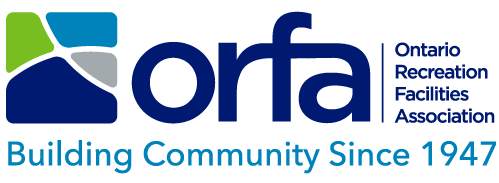- ORFA Home
- Resource Centre
- Technical Corner
- The Other Side of a Recreation Facility as a Gathering Location
Technical Corner
The Other Side of a Recreation Facility as a Gathering Location
May 2022
Much has been written about the social benefits of recreation infrastructure as an important location to gather and mingle however, recreation facilities often become an open location for persons who are homeless. There is a growing concern with homelessness in parks that at times have recreation professionals tasked not only with mitigating social conflicts between traditionally housed park users and those facing homelessness, but also a variety of safety, health, and environmental concerns. In addition, recreation professionals must research municipal bylaws, such as anti-loitering and anti-camping laws so they clearly understand their responsibilities. Significant information has been generated surrounding basic Human Rights (refer to: A National Protocol for Homeless Encampments in Canada). Recreation professionals who encounter individuals who are soliciting funds from users of recreation facilities should be aware of the Ontario Safe Street Act that restricts a person from soliciting. Solicit by definition means "to request, in person, the immediate provision of money or another thing of value, regardless of whether consideration is offered or provided in return, using the spoken, written or printed word, a gesture or other means. 1999, c. 8, s. 1."
The ORFA sees a growing need for education to better address homelessness and the role of recreation workers in all public recreation spaces. One member comment states, “We have had this issue primarily with our arena in a rough part of town with it only getting worse over the past two years. This year we are providing staff with lone worker monitors and training them on situational awareness and de-escalation to avoid negative outcomes”.
The impact of homelessness on public recreation can include trash, camps and the ongoing presence of people that make the area less attractive for use. Recreation buildings are often unsecured and open to the public which can result in homeless people using washrooms for basic hygiene purposes as well as a place for drug injection. Often upset users will voice public complaints to facility management, police departments and health departments. Complaints include requests to provide security, remove trees, restrooms, vegetation, pavilion walls and benches used by people experiencing homelessness.
Most recreation professionals believe that fully addressing these issues are outside the scope of recreation and require substantial collaborative efforts with social service providers. They see public education as an important step in generating community support to address homelessness in parks and other recreation facilities. Efforts of recreation professionals to educate the public may take multiple forms, including interpretive signage, pamphlets, public statements, community meetings, forums, and online platforms, including social media. Parks and other public spaces are key spaces for functional communities.
Posting rules of conduct and use is an important part of the educational process.
- All members of the community are welcome to use public parks and open spaces for recreation, relaxation, rest, and leisure activities.
- It is important that all users know and follow the rules of conduct. No long-term use is permitted.
- Please pack out personal waste when possible.
- Report any issues by calling ###-###-####.
Recreation professionals must include training for all staff who have maintenance responsibilities in parks and open spaces. Workers who are expected to work alone will require additional training and communication tools to ensure they remain safe. A person is "alone" at work when they are on their own; when they cannot be seen or heard by another person. Working alone includes all workers who may go for a period of time where they do not have direct contact with a co-worker. While it is not always hazardous to work alone, it can be when other circumstances are present. Whether a situation is a high or low risk will depend on the location, type of work, interaction with the public, or the consequences of an emergency, incident, injury, etc. The wide variety of circumstances makes it important to assess each situation individually.
Safely clearing homeless encampments from parks and open spaces can take months to properly plan [More] and cost millions of dollars [More] and may include the need for security patrols [More]. The issue is often unresolved as these individuals will seek other locations requiring reinvestment in removal. Recreation professionals are not social workers but rather individuals entrusted to safeguard public assets. Frontline staff should be trained to report any unauthorized use of the public infrastructure with facility management taking appropriate action as soon as possible as to avoid a large-scale issue.
Comments and/or Questions may be directed to Terry Piche, CRFP, CIT and Technical Director, Ontario Recreation Facilities Association
|
Note: The publisher, (Author(s)/General Editor(s)/Licensor(s)) and every person involved in the creation of this communication shall not be liable for any loss, injury, claim, liability or damage of any kind resulting from the use of or reliance on any information or material contained in this communication. While every effort has been made to ensure the accuracy of the contents of this communication, it is intended for information purposes only. When creating this communication, none of the publisher, the (Author(s)/General Editor(s)/Licensor(s)) or contributors were engaged in rendering legal or other professional advice. This communication should not be considered or relied upon as if it were such advice. If legal advice or expert assistance is required, the services of a competent professional should be sought and retained. The publisher and every person involved in the creation of this communication disclaim all liability in respect of the results of the any actions taken in reliance upon information contained in this communication and for any errors or omissions in the works. They expressly disclaim liability to any user of the work. |
